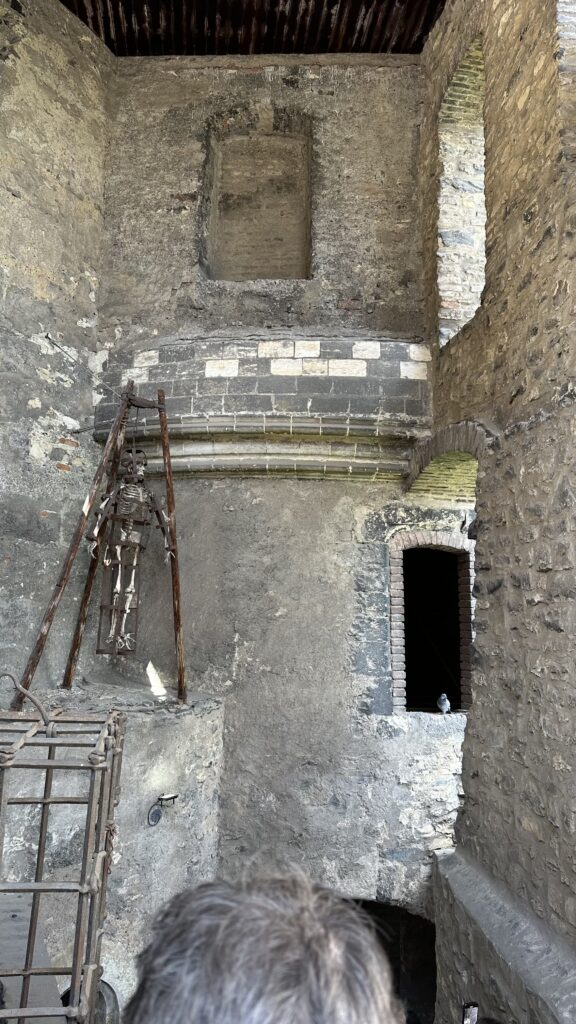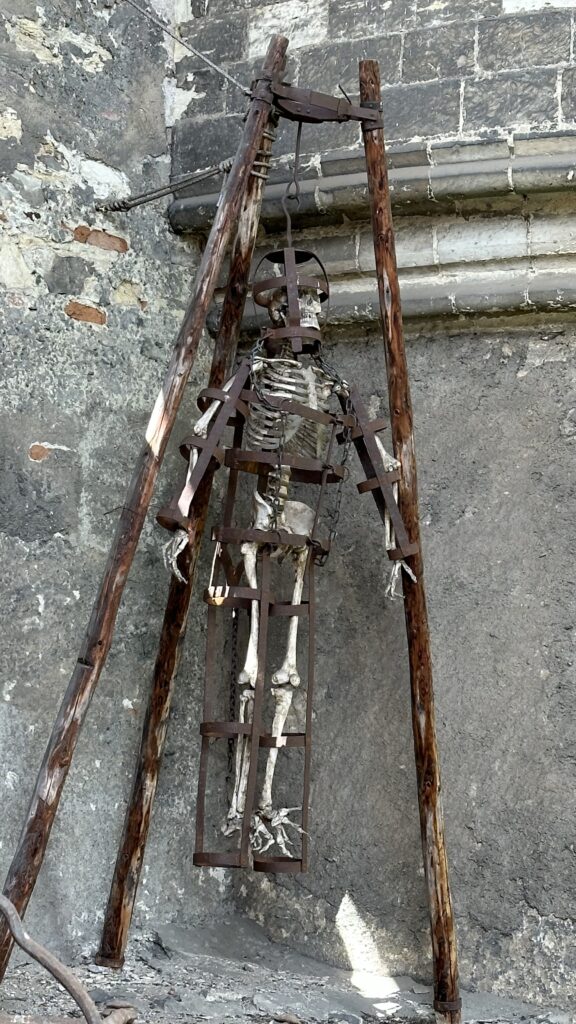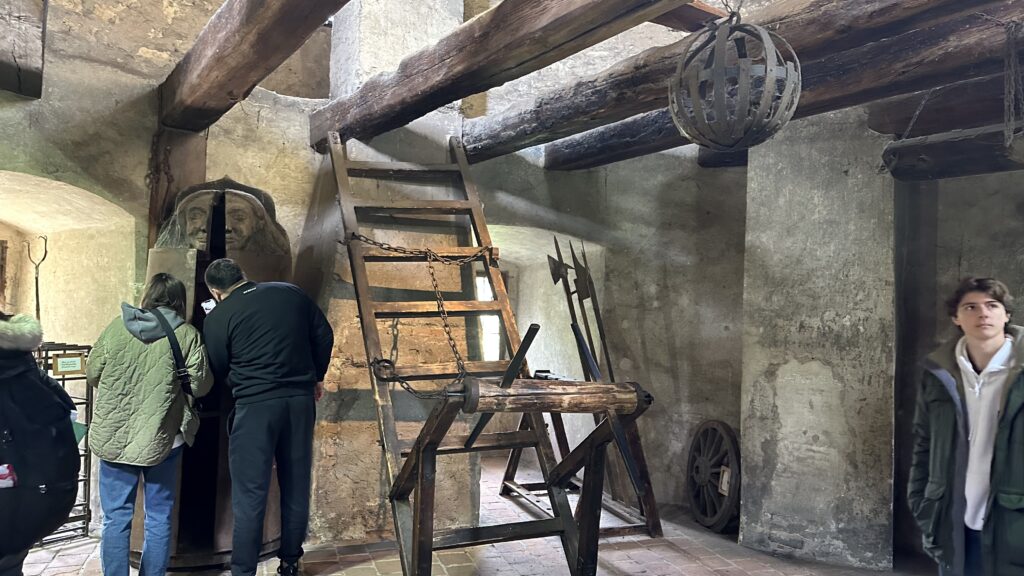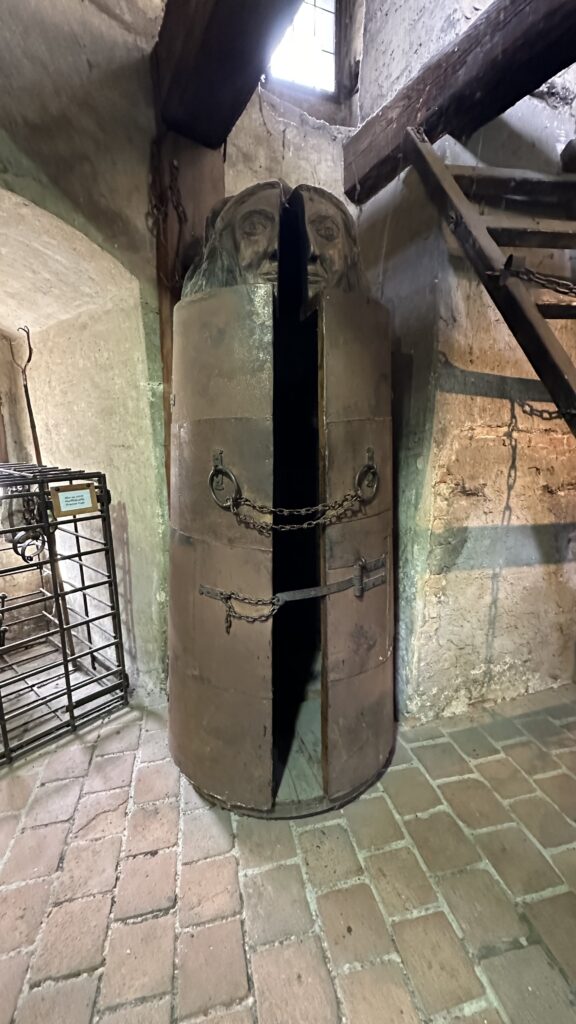The Prague Castle isn’t just one building, and not everything there is accessible to visitors. The castle’s former royal residences are now home to the Czech president and a number of government offices and functionaries. Basically, visitors are funneled through four main attractions—The Basilica of St. Vitus, the Vladislav Hall, the Basilica of St, George, and the Golden Lane. More on each later.
The Prague Castle is considered to be the largest in the world in terms of physical dimensions—750,000 square feet in a walled enclosure over 1,800 feet long by around 430 feet wide. It was begun in 870. It would be 500 or more years later that the defining structure of the castle—St. Vitus’ Basilica—would be completed. Structures came and went, were modified, burned, neglected, and rebuilt over any hundreds of years.
Basilica of St. Vitus
The Basilica of St. Vitus is visible from all over the city of Prague. It stands well above the walls of Prague Castle and has a distinctive Gothic style, sort of. The original structure was Gothic, with buttresses and spires and gargoyles. The next major addition was done in the Baroque style. By the time the city got around to finishing the structure as it now stands, it was decided that Gothic was the way to go again, so now you have, from right to left, a building done in Gothic, Baroque, and Neo-Gothis styles. It still works.
The interior is gorgeous, with lots of stained glass, silver, gold leaf, and high vaulted ceilings. Coronations took place here as well as other important state events. St. (and former king) Wenceslas (yes, that one), is buried here in an impressive cappella that could be its own church.
I’ll let the images speak for themselves, and please hit the Photo Dump for MANY more.
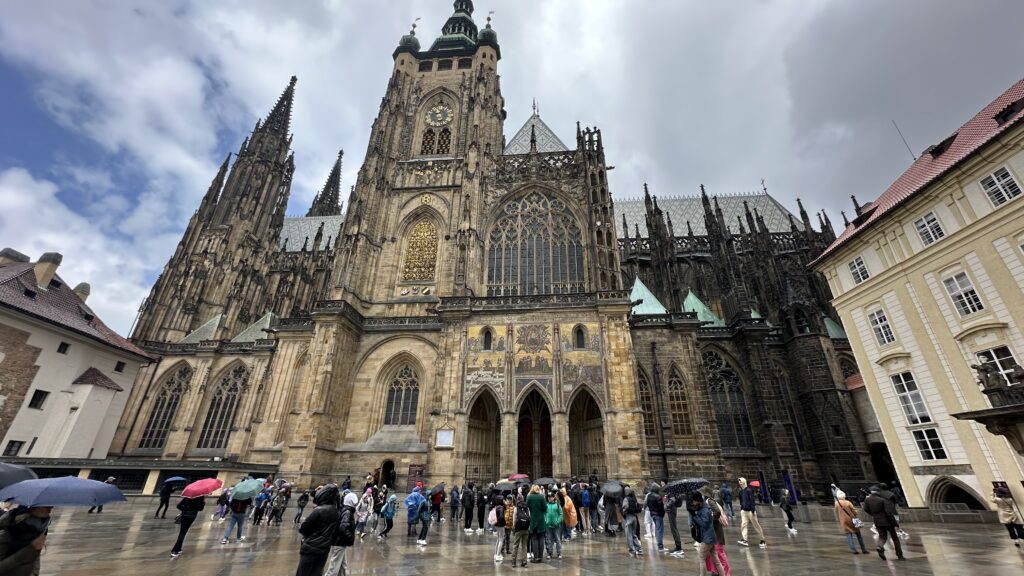
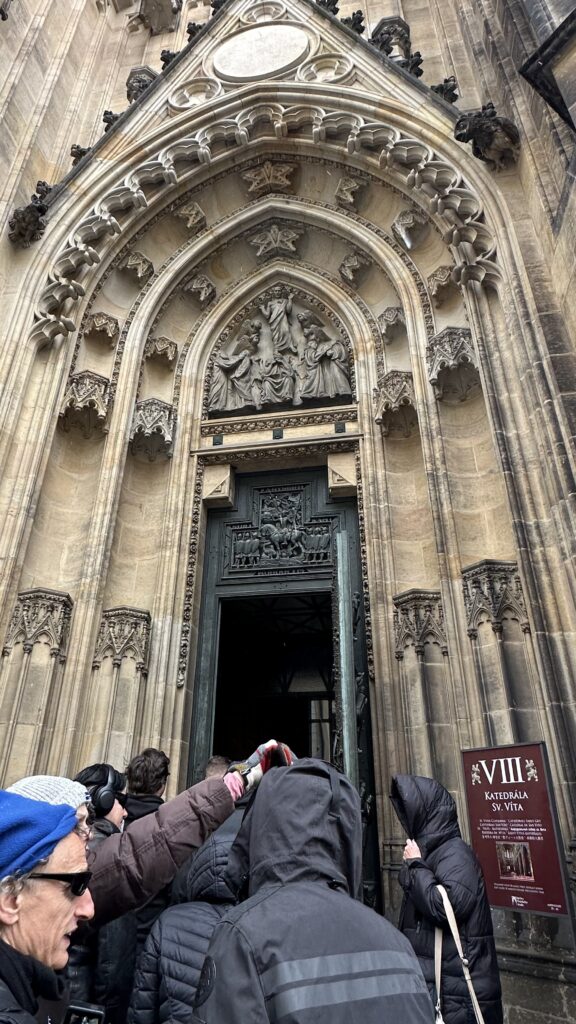
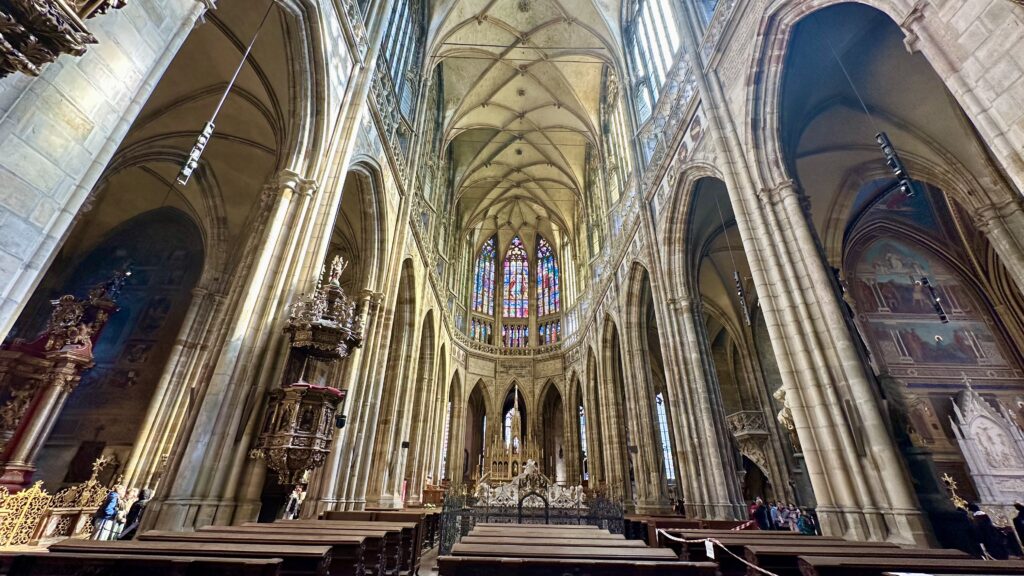
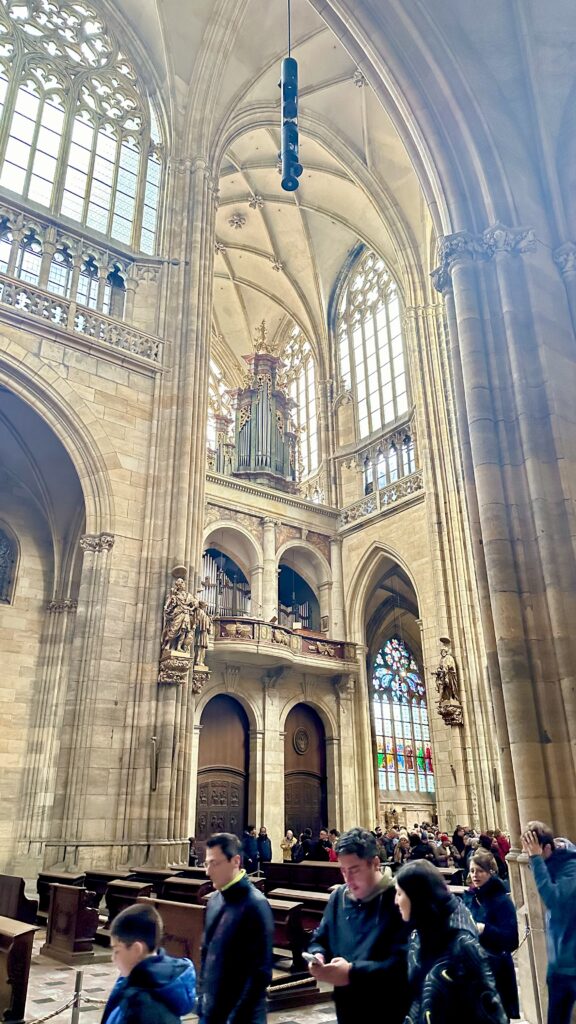
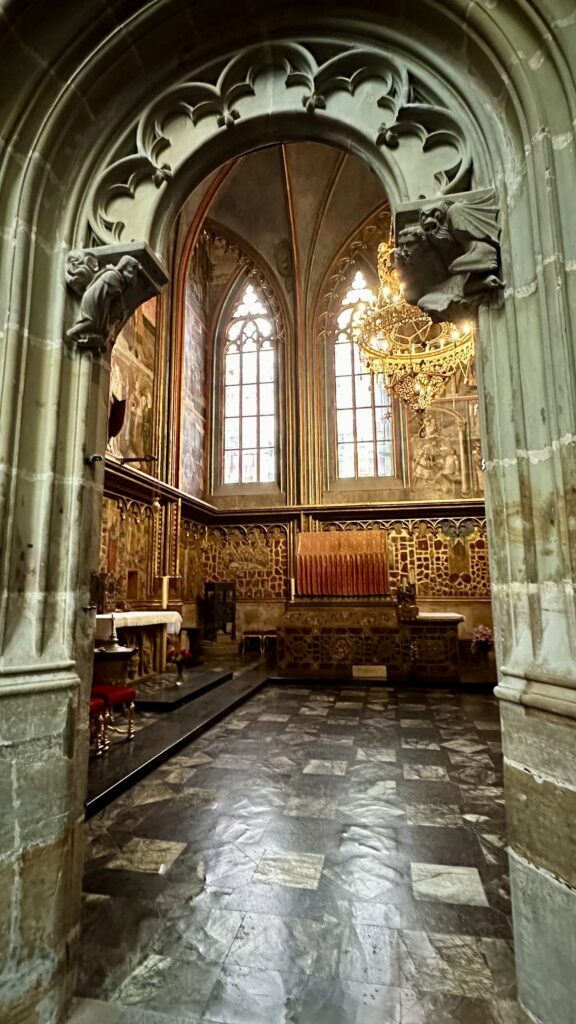
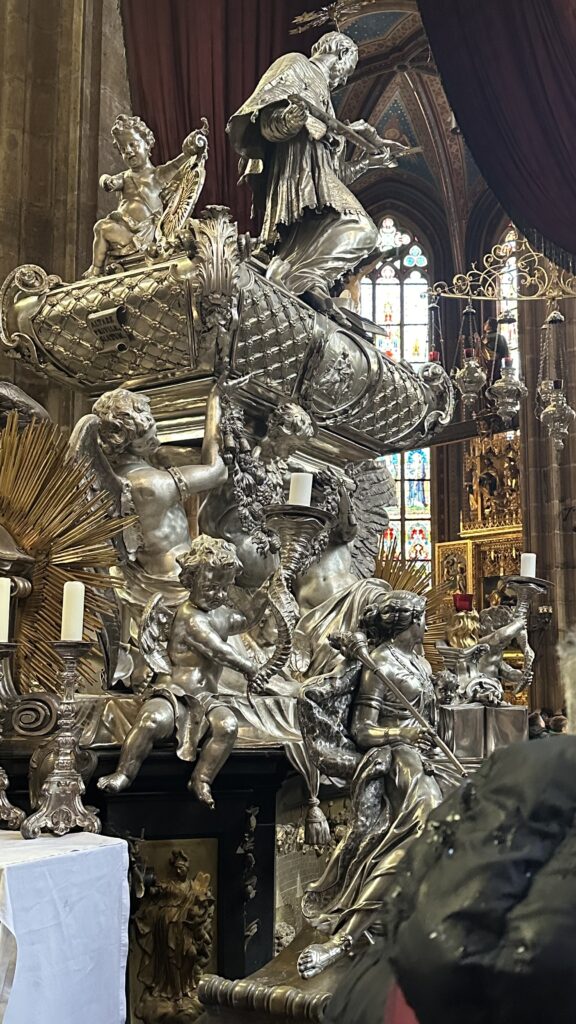
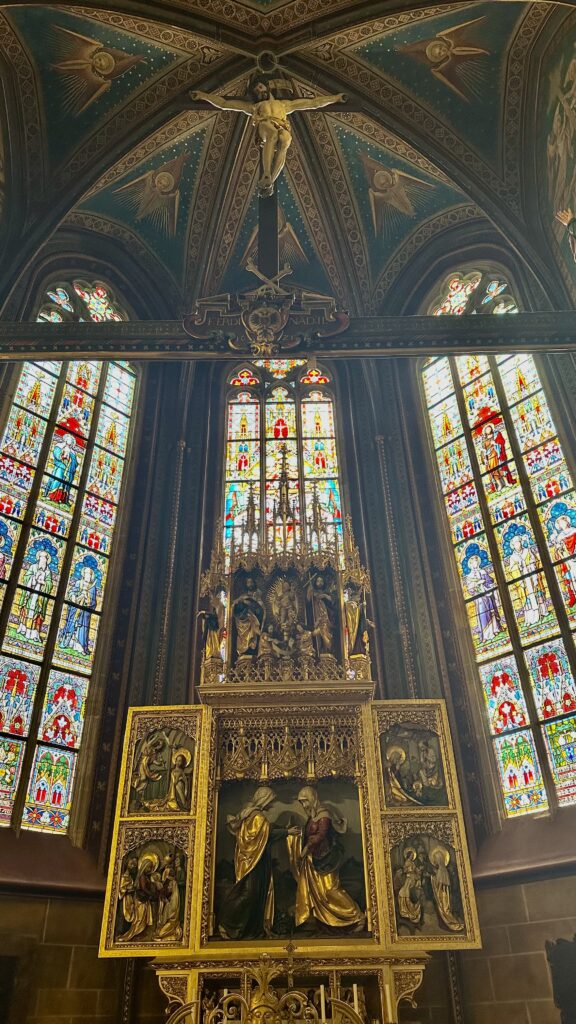
I’m serious, Go to the Phot Dump.
Vladislav Hall
Vladislav Hall is a Romanesque structure that was once part of a castle but basically was kept as a large hall for weddings, royal assemblages, and even jousting. (Not sure how they dealt with the wooden floor.) Its story is interesting for two reasons. (Three, of you count the jousting.) There were three defenestrations held there, including the Third Defenestration which led to the 30 Years War. In fact, the term defenestration originated there. Catholics defenestrated Protestants, Protestants defenestrated Catholics, and so forth. There was apparently no law against it.
Then there is the story of St. John of Nepomuk. He was a 14th century priest and confessor to Queen Joanna of Bohemia who refused to divulge to the king (Wenceslas IV) all of her confessions. The good king took John to the Charles Bridge and threw him off, killing him. (Since it only happened once, no one coined a phrase for death by being tossed off a bridge. I propose depontemation.)
John became St. John for his martyrdom and his bones are housed in a rather ornate reliquary in Vladislav hall. See below.
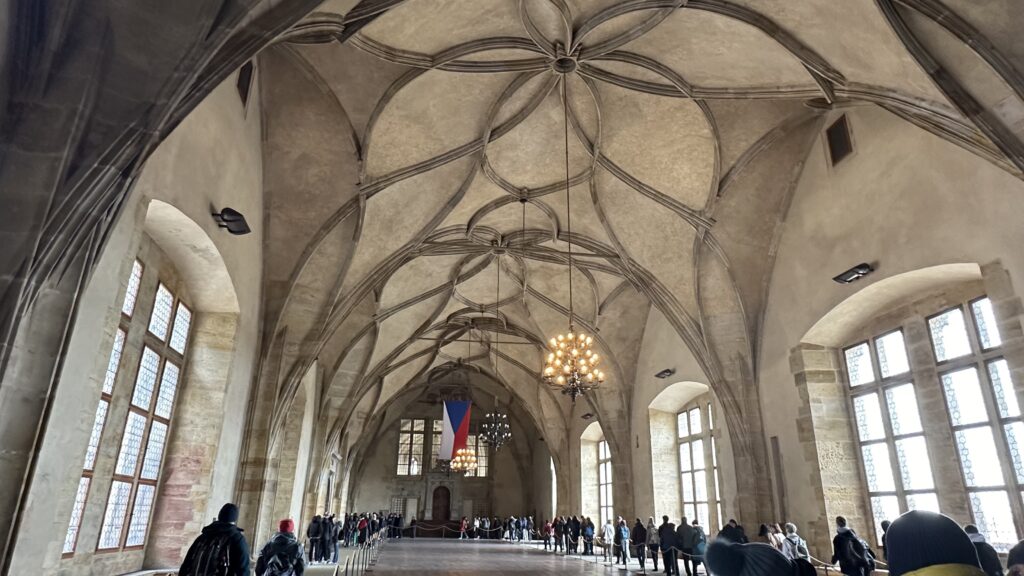
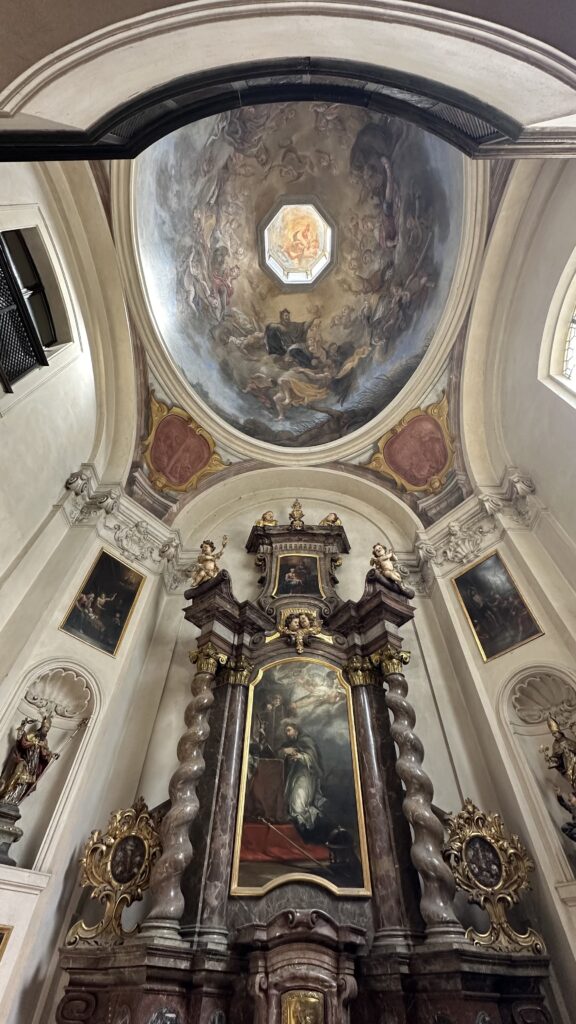
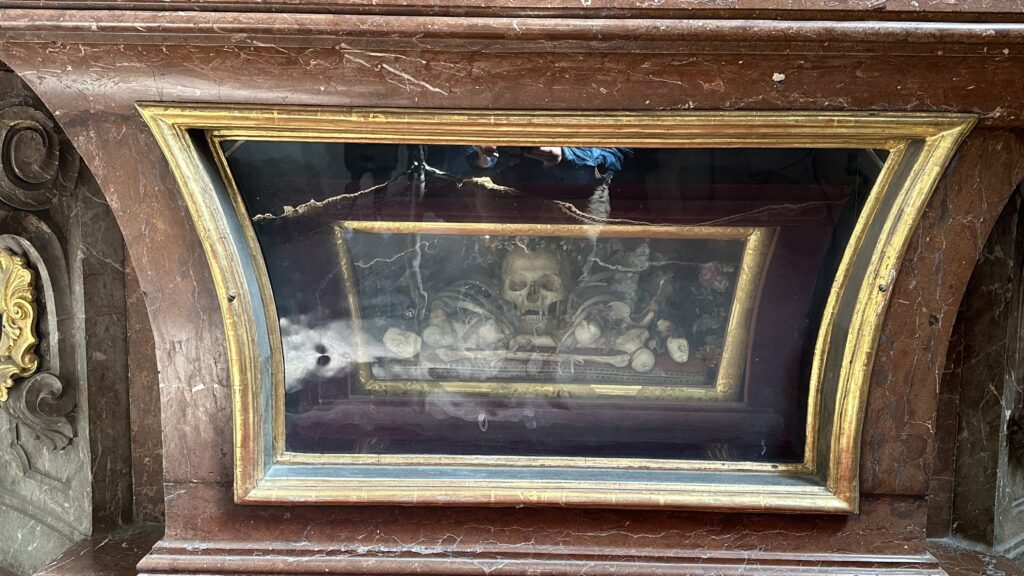
The Basilica of St. George
The Basilica of St. George is the oldest church on the Prague Castle and one of the oldest in Prague. It’s nothing fancy, at least compared to the Gothic and Baroque styles of its neighbors. Its walls are plain limestone block and the style is strictly Romanesque. It was consecrated in the late 800s, at the beginning of the spread of Christianity in Bohemia.
The most interesting burial there is that of St. Ludmilla, the grandmother of St. Wenceslas. She was by all accounts a tough customer. She was murdered (and martyred, as it turned out) when King Wenceslas’ mother decided Ludmilla had too much influence over her son and had two noblemen strangle her with her veil. Defenestration and depontemation were reportedly considered and rejected in favor of something a little more direct.
The Baroque facade of the basilica was added in the late 1700s, which explains why it looks like a KFC. Some images:
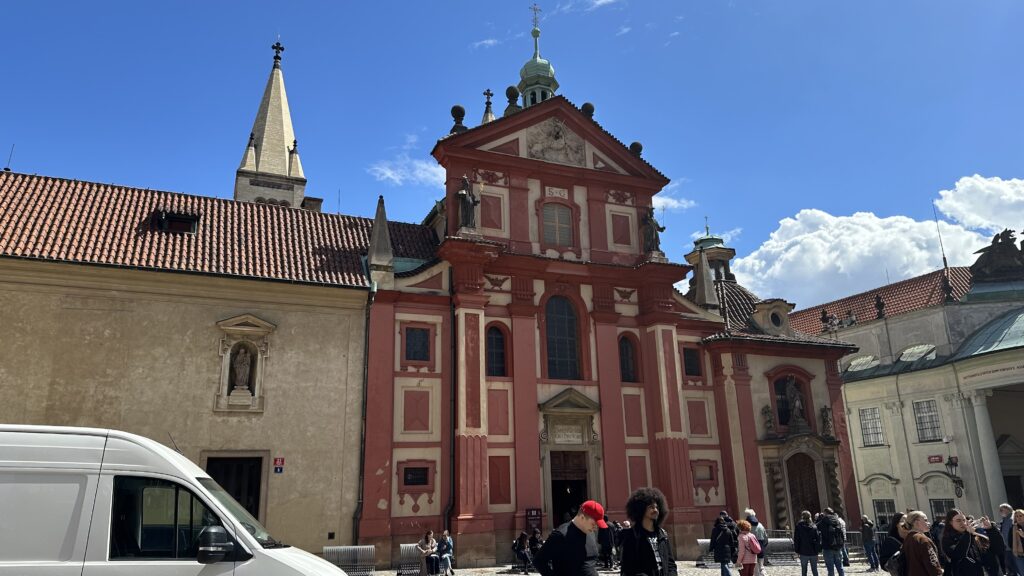
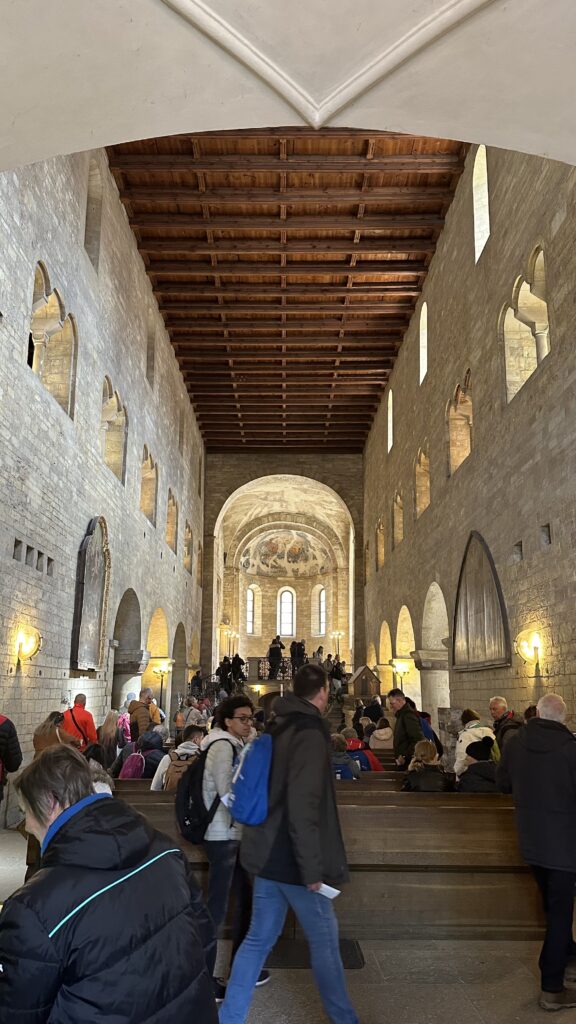
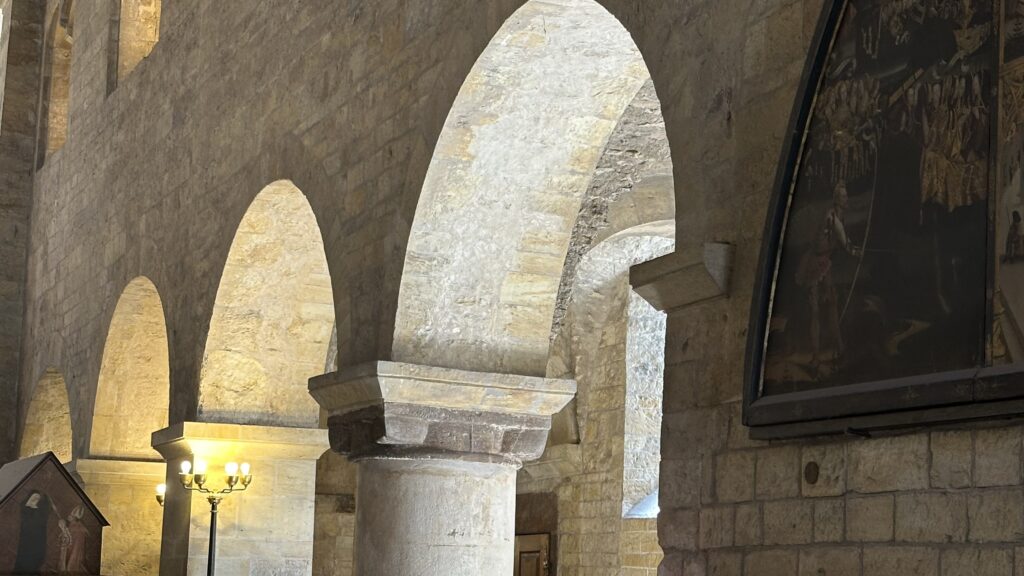
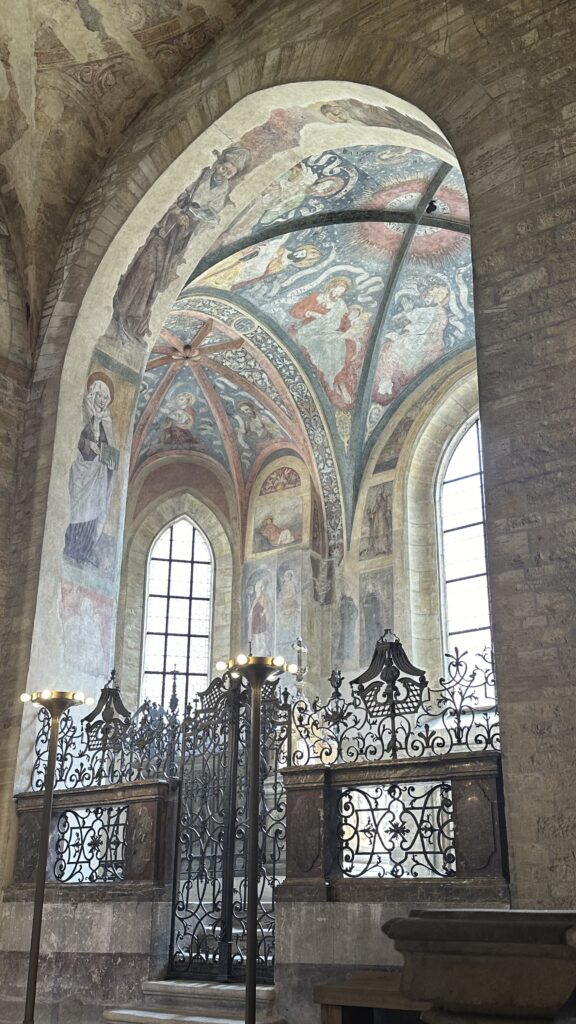

The Golden Lane
toward the eastern end of the castle complex is a long row of very small connected houses called the Golden Lane. In their day, they were quarters for soldiers and guards, groundskeepers, shopkeepers, merchants, a few taverns… They have been private residences in the 1900s but are now either gift shops or demonstrations. All very interesting.
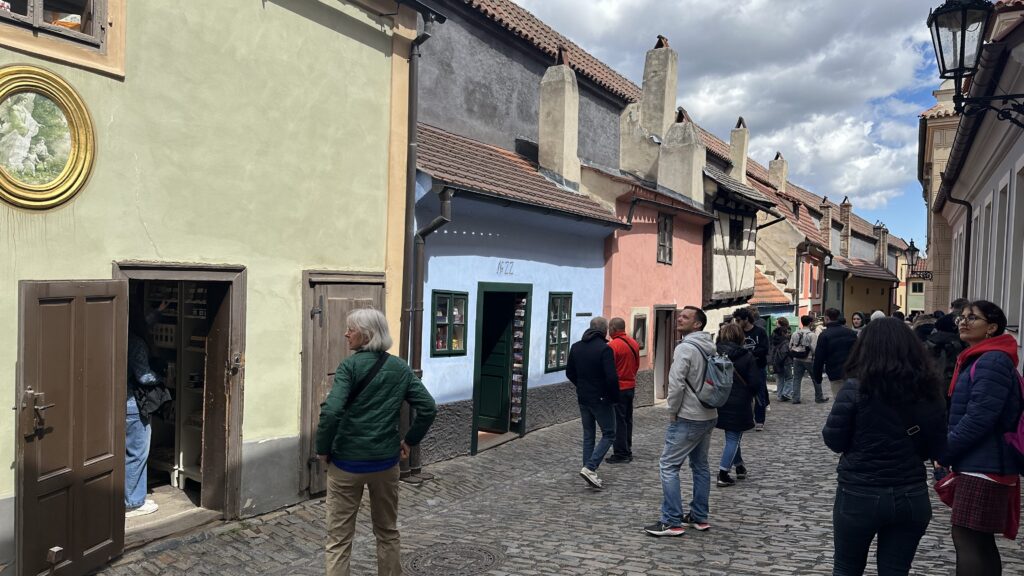

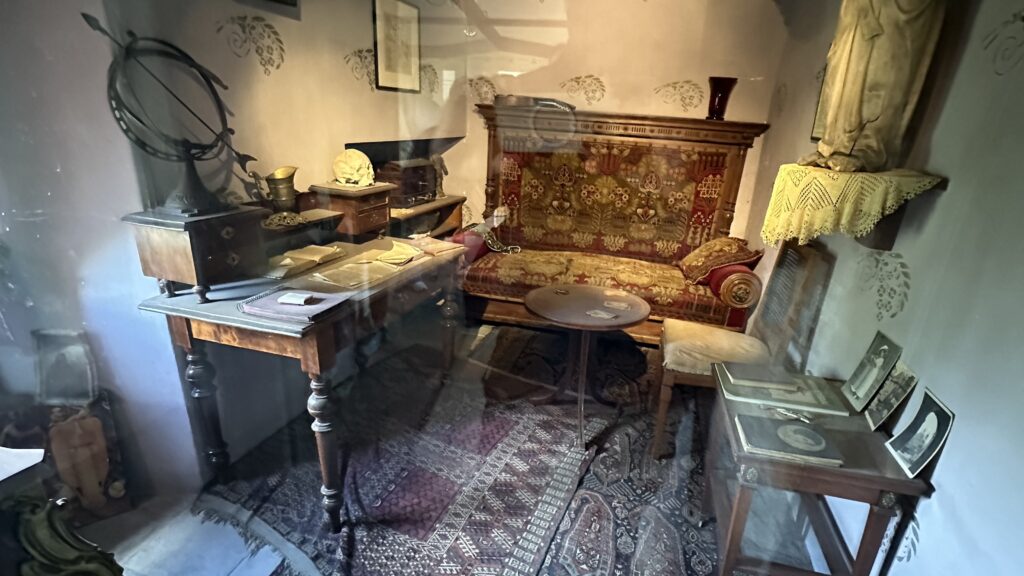
And a Bonus Medieval Jail
At the end of the Golden Row is a narrow stairway leading down to a medieval jail and all around torture center. It’s a little creepy, and very reminiscent of a look of 1960s Gothic horror movies. here are some images.
